Wudang Shan,the Mountain of Tao
6 min readHeritage:Ancient Building Complex in the Wudang Shan Mountain A legendary mountain,immortalized in countless sword-fighting novels,Wudang Shan has been the cradle of Taoism for over 1,000 years.
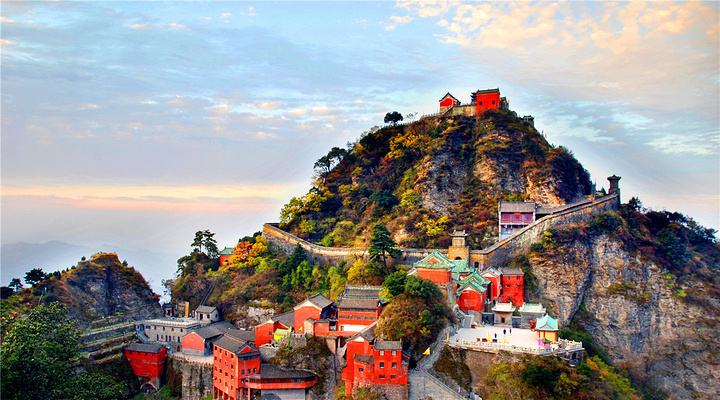
Wudang Shan’s ancient architecture is nestled throughout the mountain.
The Wudang Mountain range joins the Qinling Mountains in the west and Shennongjia in the south.Wudang Shan itself is situated in Danjiangkou in Hubei Province,not far from Wuhan and comprises 72 peaks,36 cliffs and 24 valleys.Its main peak,called Heavenly Pillar Peak(tianzhifeng ),stands at a statuesque 5,287 feet(1,612 m)and together with the other mist-shrouded peaks,creates a spectacular vision.However physically daunting Wudang Shan may seem,its natural beauty and exquisite architecture,its rich history mixed with Taoist culture and lore,make it a worthwhile detour from Wuhan.
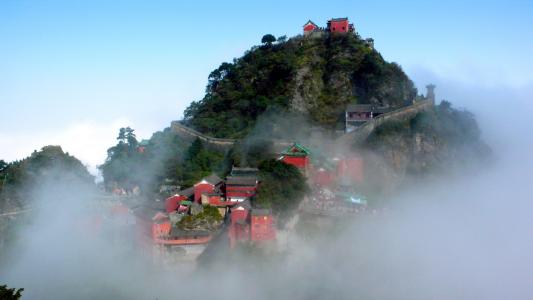
Hugging the terrain of Wudang Shan are pockets of architectural delights.Whether atop precipitous peaks,reclining on sloping terraces or tucked into ravines and caves,these exquisite pagodas,nunneries,prayer halls and cave temples have drawn pilgrims and tourists for centuries.
The oldest temple on Wudang Shan is the Five Dragon Ancestral Temple(wilong gong)which dates back to the 7th century AD.Like this temple,the 72 temples,39 bridges,36 nunneries and 12 pavilions on Wudang Shan reflect some of the best architectural styles of the Tang,Song,Yuan,Ming and Qing dynasties.
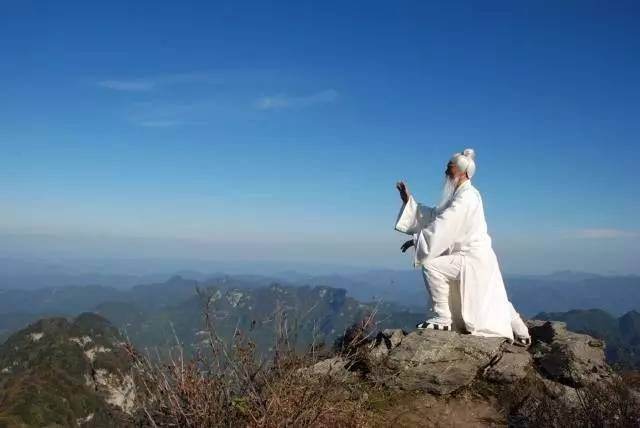
Although construction begun in the Tang dynasty and expanded through the Song and Yuan dynasties, it was during the Ming dynasty that an architectural building frenzy really tool hold of Wudang Shan. The pivotal time for Wudang Shan’s popularity as a center for Taoism, which spurred the construction, came with the ascension of Emperor Zhudi to the throne in 1403.
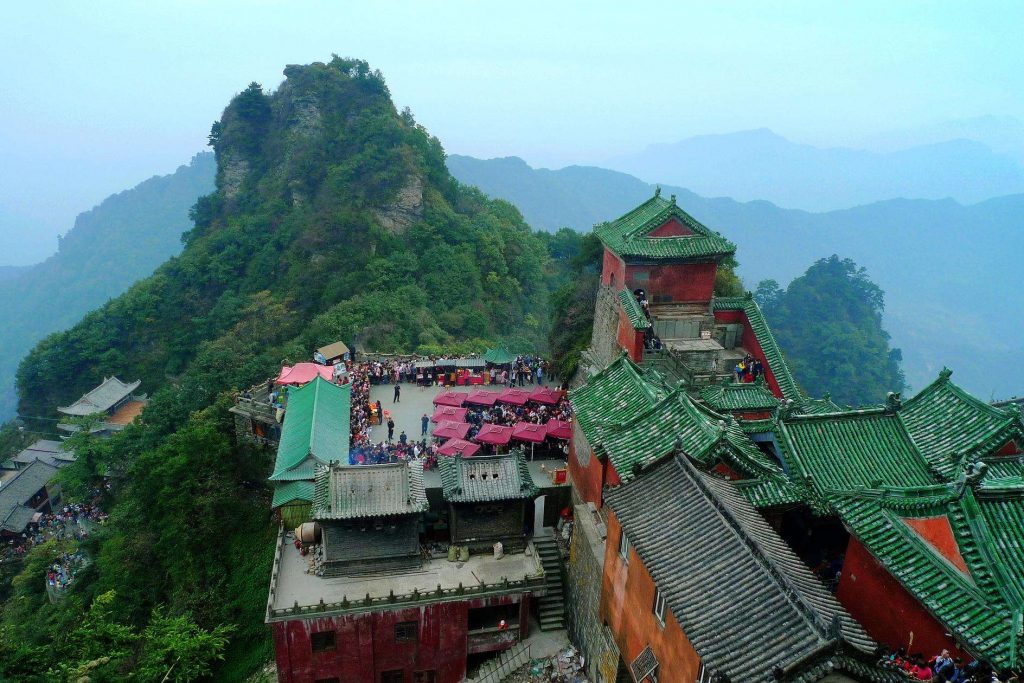
Emperor Zhudi, fourth son of the founder of the Ming dynasty, overthrew the appointed heir and pronounced himself emperor. To win the people over and justify his usurpation, the new emperor claimed that he had acted on celestial orders. He attributed his success to the widely revered Taoist deity Zhenwu of Wudang Shan, who had attained immortality atop the mountain. The new emperor initiated extensive construction projects to give thanks to the gods for his victory, but also to affirm his power in the eyes of his court. He commissioned the Forbidden City in Beijing as well as the huge temple complex on Wudang Shan, which he dedicated to his patron god Zhenwu, who is also known as the “Perfect Warrior.”
Each structure became part of the elaborate Taoist architectural complex, comprising some 8,000 rooms. Countless imperial decrees commandeered the services of laborers, designers and craftsmen.01d temples were renovated and grand new ones were built from the toil of 300,000 workers over 12 years. The Golden Hall, Taihe Temple, Southern Crag Palace, Purple Cloud Palace and Yuzhen Temple were all built during this time.
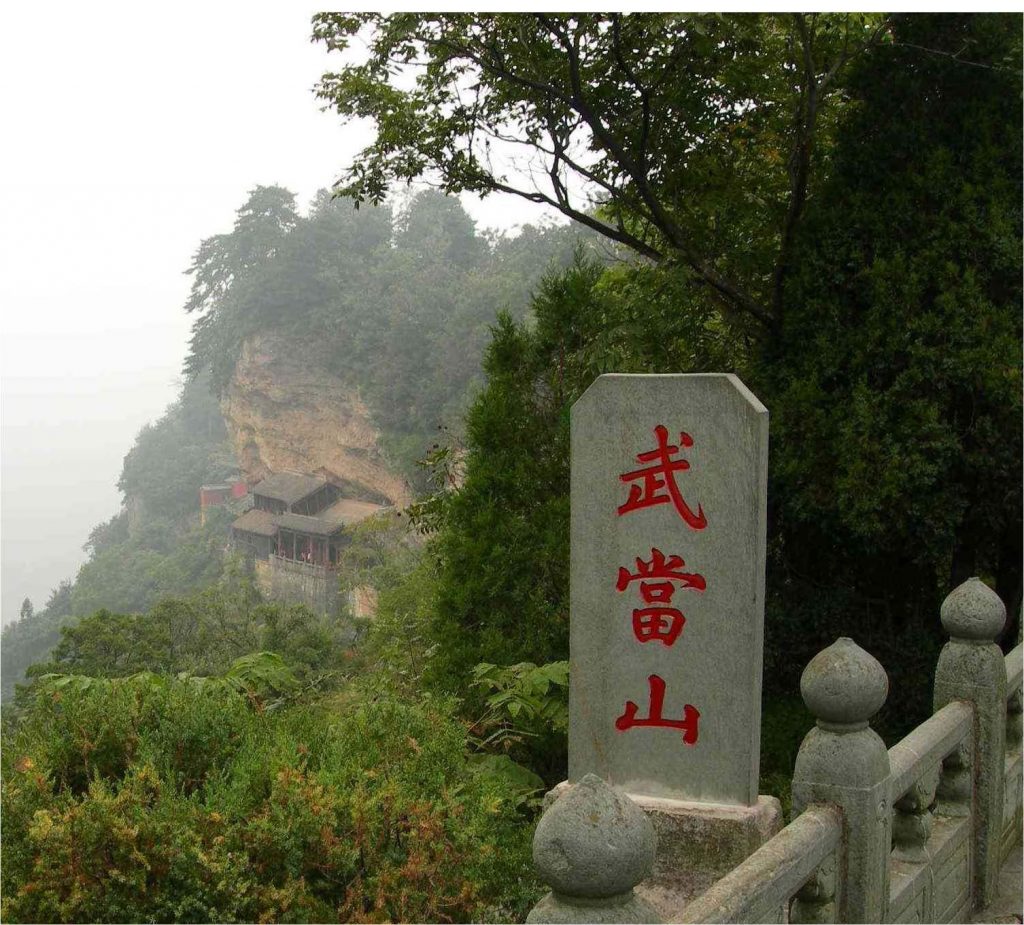
Every aspect was planned to fine detail, from guidelines of construction to the treatment of surplus building materials. The result was that this ancient complex, whichwas surrounded by flora, foliage, springs and rocky outcrops, blended seamlessly with the landscape. In its synergy with the natural environment, the complex remains true to Taoist principles of respecting nature, maintaining balance and being one with “the Way.”

Steadily Wudang Shan became home to the grandest temples and held the largest Taoist population in the country. It was honored across China with the sobriquet as “the first famous mountain under heaven.”Today, it’s recognized as an architectural achievement and 1004 in 1994, UNESCO bestowed Wudang Shan World Cultural Heritage status.zixiao Taoist Teple at fudang shan.

Wudang Shan is also world-famous for its distinctive style of martial arts called Wudang Wushu.This form of martial arts is highly regarded in China on a par with the skills of the better known Shaolin monks.Created by martial arts exponent Zhang Sanfeng,it’s still practiced by Taoist priests as part of their routine fitness and self-defenseexercises.This kung fu style has been honed to a fine art through the centuries,evolving into variations like Tai Chi and Ba Gua.The technique is centered on one principle:to conquer toughness by gentleness,mainly using the opponent’s force to gain mastery-this is considered soft or internal kung fu while the Shaolin style is hard or external.Today,kung fu enthusiasts still flock to Wudang Shan’s martial arts schools to meditate and refine their skills.

About 0.6 mile(1 km)from Wudang Village is the entrance gate to begin the pilgrimage up the mountain.From this gate to the mountain is a good 6-mile(10 km)walk.By taking a minivan taxi for RMB 20 to the parking lot you can conveniently circumvent most of the pre-mountain hike,but while this 20 minute ride on a narrow,sharply curving road may be exhilarating for some,it could be stomach churning for others.

One of the first temples you’1l see is the Southern Crag Palace(nanyan gong)-it’s a 15-minute walk from the parking lot.Behind the main altar of Southern Crag Palace is the Tianyi Zhenqing Stone Palace(tianyi zhenqing gong ),surrounded by craggy outcrops.A 9.5-foot-long(2.9 m)stone beam resembling a dragon’s head protrudes out over a cliff with an incense burner at its end.Modern day visitors continue to be impressed by the ancient craftsmen who built this without any high-tech gadgets and worshippers test their faith by crawling onto the dragon’s head to place their incense sticks,despite it being extremely dangerous.

Purple Cloud Palace(zixiao gong),also close to the parking lot,reclines prettily on the mountainside as it has for 600 years.It has one of the largest and best-preserved Taoist halls of worship this side of the mountain known as Nanyan Scenic Area(nanyan jingqu).It was built during the Song dynasty but received a makeover during the Ming dynasty.It consists of several halls,including the Dragon and Tiger Hall(longhu dion),the Purple Sky Hall(zixiao dion),the East Hall(dongdao yuan)and West Hall(xidao yuan).It was an important ancestral shrine of the imperial court and the monks here used to offer prayers for the emperor.There are 28 life-sized statues of Perfect Warrior Zhenwu.Look for two Chinese treasures:the“iron tree blossoms”lanterns,decorated with patterns of phoenixes,dragons,blossoms.From the parking lot,a 2-hour hike to the Golden Hall(jindian)awaits you.
Alternatively,take a minivan around to the other side of the mountain where you can hop onto a cable car to reach the summit.
The Golden Hall is a copper wonder.Built in AD 1416,the gold-gilded hall is 18 feet(5.5 m)high,14.4 feet(4.4 m)wide and 10.3 feet(3.15 m)deep and is completely copper-cast,save for its base.It houses a 10-ton life-size statue of Zhenwu.At the base is his symbol of a tortoise and a snake,the latter’s body wound around the former and the two heads raised towards each other.
In the past,before lightning rods were installed,lightning struck the hall whenever there was a thunderstorm,which meant a spectacular visual treat of flashing lights and sparks of fire.Fortunately,despite numerous strikes,the hall has remained unscathed.

Another Taoist temple with a fascinating story is Yuanhe Guan(yuanhe guan).
Reaching the summit after taking the endless stairs up,and drinking in the fantastic view.
Deciphering the poems,scriptures engraved on banners and rock walls.
Attending a martial arts camp,and getting first-hand experience of the tough training of wushu exponents.
Priest clilbing fudang Shan on their way to a Taoist cereony.
Sitting with the monks for an early morning drink of tea.Stories unfold.
Some notable sights include the five-story tall Truth Returning Nunnery(fuzhen guan),where there is a single column supporting 12 roof beams.If you’ve been to Beijing’s Temple of Heaven,there is similar echo wall at Wudang Shan called Nine-bend Yellow River Wall(jiugu huanghe qiang).Then there is the special bell at Turning Round Hall(zhuanshen dian).If you ring it,the sound lingers for a long time outside the hall,while hardly any sound can be heard inside the hall.Over at Taizi Po(taizi po)is a gorgeous waterfall.It’s a bit out of the way,but if you have an extra day or so,it’s definitely worth the side trip.
